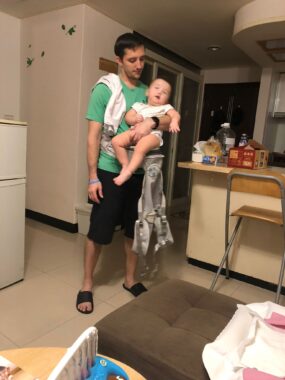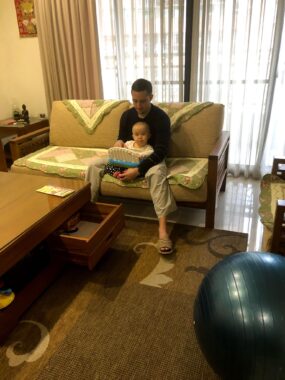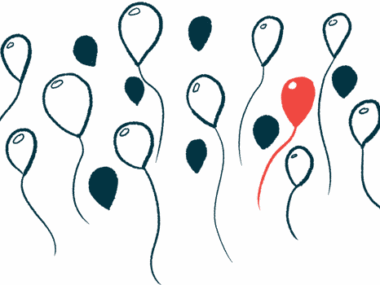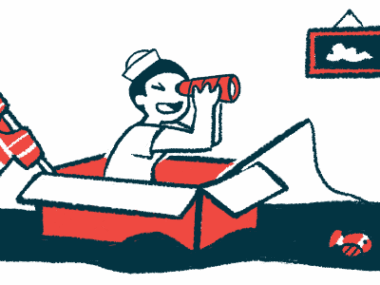At the last minute, a desperate search for a home pays off
Participating in a clinical trial underway in another nation was tricky
Written by |

As my wife, Judy, and I drove through the streets of Taipei on a recent trip to celebrate the journey of the gene therapy Upstaza (eladocagene exuparvovec) in Taiwan, we passed an apartment building I hadn’t thought about in years. A flood of memories came rushing back.
It was Christmas Eve in 2018 when we hopped on a plane from Singapore to Taiwan based on a hunch. That day, we finally learned the name of the mysterious illness affecting our daughter, Rylae-Ann: aromatic l-amino acid decarboxylase (AADC) deficiency, a rare genetic disorder. She was just 8 months old.
That same day, we were told that she qualified for a gene therapy clinical trial in Taiwan. But we had no idea how we’d make it work since we lived and worked in Singapore and would have to spend several months in Taiwan for the trial. Judy and I had just accepted new jobs that helped pay our endless medical bills.
To make it work, Judy’s mom and Rylae-Ann’s nanny stayed in Singapore full time while Judy and I took turns flying back and forth as often as possible.
With that figured out, we moved on to the next big issue: housing.
Attempt No. 1

Richard and Rylae-Ann try to settle in their first apartment in Taiwan so that Rylae-Ann could participate in a clinical trial for gene therapy. The local nightlife had other plans. (Courtesy of Richard E. Poulin II)
The next challenge was finding a place to stay. Hotels and serviced apartments were far too expensive for a long-term stay, so we turned to Airbnb in hopes of finding something more affordable. We researched from Singapore and finally found a place we thought would work.
We had only 12 days off work, so the three of us flew to Taiwan to settle in before Rylae-Ann’s treatment started.
The first apartment seemed perfect. It was close to the hospital and in a convenient area for groceries and public transportation. But after we moved in, we realized there was a big problem: It was on a back street filled with nightclubs and karaoke bars. The area came alive after dark, and the music was loud. After a few sleepless nights, we had to leave.
Trying again
Our second apartment was also near the hospital, but it was much older than the previous one. Things were fine until a small earthquake hit on the second day we were there. I remember looking at a cheap chandelier swaying above us as Judy grabbed Rylae-Ann and ran out of the building with her mom and the nanny right behind.
The tremor was brief, but it was enough to make Judy feel unsafe staying there. We couldn’t risk another scare, especially with time running out to find a suitable place before we had to return to work.
Third time’s a charm

Much better: The family’s third attempt at finding an apartment pays off, thanks to the generosity of the owner. (Courtesy of Richard E. Poulin III)
By sheer luck, Judy’s mom had reconnected with an old friend, who upon hearing about our situation told us that an apartment she was trying to sell was vacant. And it wasn’t just any apartment: It was a spacious, three-bedroom unit, something unheard of by Taipei standards.
The kitchen, dining room, and living room were perfect, and the best part was its location: It was a bit farther from the hospital than the other two places, but within walking distance of a peaceful park along the Tamsui River. We couldn’t have dreamed of affording such a place, but the owner, moved by our story, offered it to us at a price we could manage. It became Rylae-Ann’s home for the next several months as she underwent the groundbreaking gene therapy that would change her life.
Five years later, driving past that same apartment building reminded me of all the people who helped us along the way. Without their kindness and generosity, we wouldn’t have made it through those difficult months. Today, Rylae-Ann is thriving, and our lives have found a stable rhythm.
Passing that apartment reminded me that our journey isn’t over. Now it’s our turn to help others who are walking a similar path, facing the uncertainty and fear we once knew all too well.
Note: AADC News is strictly a news and information website about the disease. It does not provide medical advice, diagnosis, or treatment. This content is not intended to be a substitute for professional medical advice, diagnosis, or treatment. Always seek the advice of your physician or other qualified health provider with any questions you may have regarding a medical condition. Never disregard professional medical advice or delay in seeking it because of something you have read on this website. The opinions expressed in this column are not those of AADC News or its parent company, Bionews, and are intended to spark discussion about issues pertaining to aromatic l-amino acid decarboxylase deficiency.







Leave a comment
Fill in the required fields to post. Your email address will not be published.